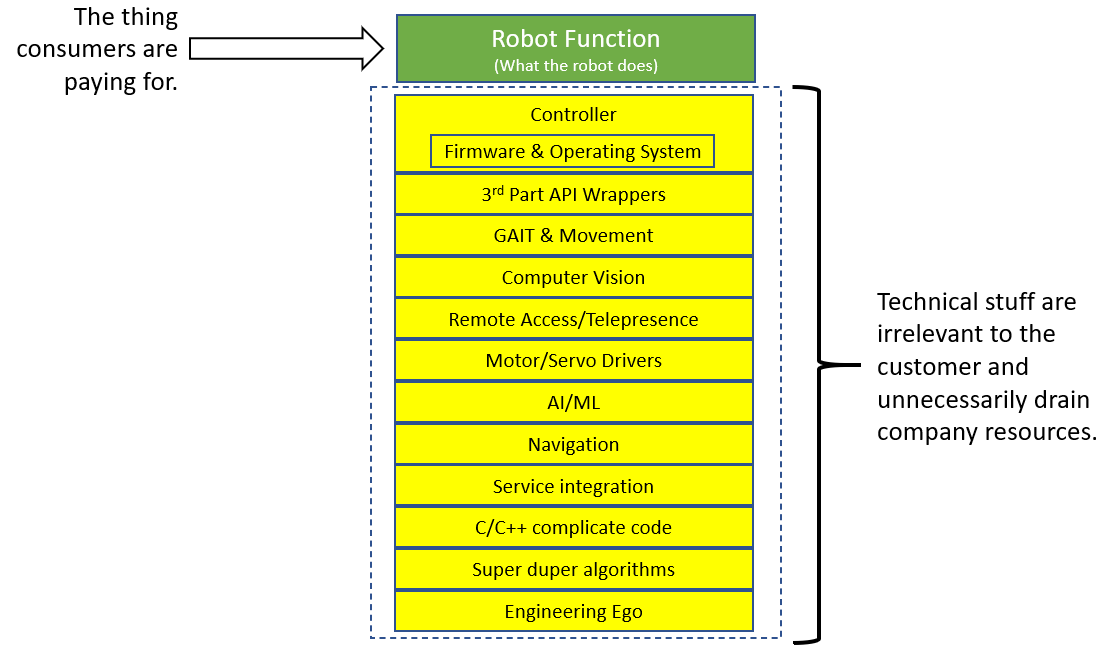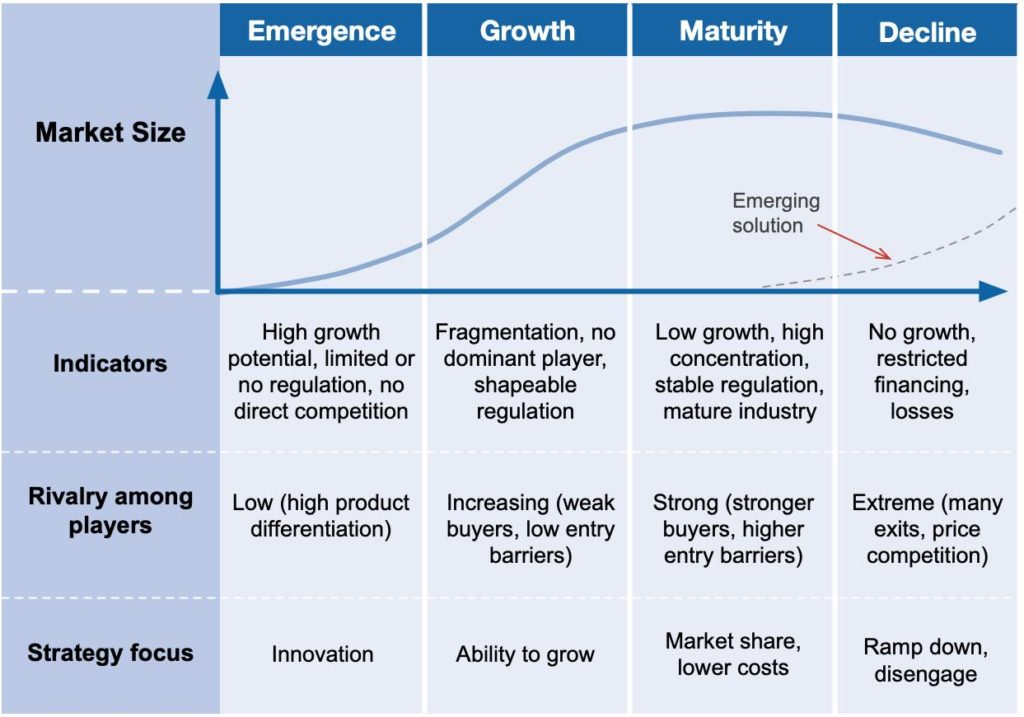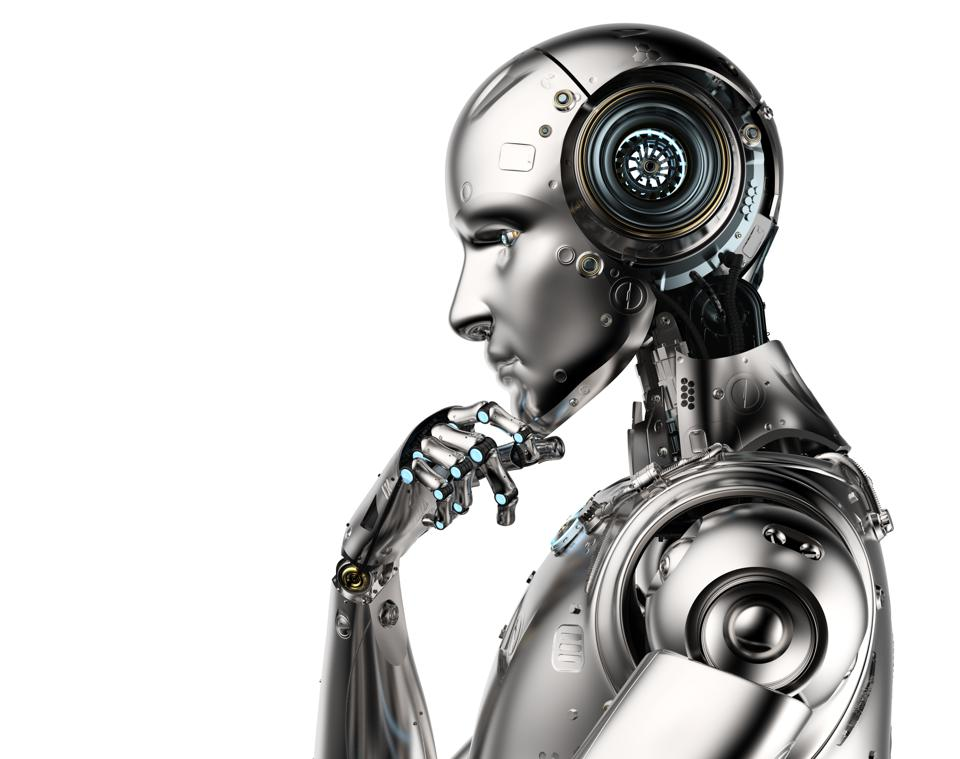
RIP: Anki, Jibo, Baxter, Mayfield, etc...
History foretells the fate of robot companies that attempt the burden of building and sustaining "the full-stack." Similar outcomes have affected companies from all industries where the founding partners were engineers. Today, we begin to ponder the question of where are the robots? Most importantly, why have so many robot companies failed, and what can we do to help robot companies succeed?

Perhaps the noise from social media, politics, and the current Covid-19 situation has caused startups and the investment community to forget a vital part of the industry life cycle stages. Organizations might have also overlooked this because it has also been several years since a new industry has emerged. Even the last few personal-computer sub-industries of mobile devices/apps, VR/AR, etc., have inherited sectors from existing mature and proven industries.

Robotics is a unique industry, albeit not too different from the personal-computer evolution, where multiple disciplines united to form a consumer product. The Personal Computer took many decades to influence and support sub-industries of software, hardware peripherals, and a wide range of use cases. Today, a computing device is user-friendly and esthetically pleasing, and the complex engineering disciplines are well hidden (CPU, operating system, drivers, power management, etc.). Readers may recall early personal-computer diagrams that included input, output, processing, and storage devices. Even earlier than the 1980's personal-computer, a computer consisted of even more complicated engineering disciplines that seemed impossible to scale to what we have today. Today, a computing device is common-place, and the components that make up computing devices are not taught in school as they once were.
The Revolution of Robot Platforms
Today, a child can operate a computing device before knowing how to speak. This results from a mature industry in which every contributor plays their strength by focusing on what they do best when contributing to product development. For example, some profitable companies make integrated circuits with a single function of performing mathematical floating-point calculations incredibly fast; because that is their strength. Another company will manufacturer a button or connector because that is their strength. Again, another produces batteries because it is their strength. The distribution of these disciplines in computing is how organizations can build platforms like Unity, Android, and Wix. Creative entrepreneurs use these platforms to make products that seamlessly integrate with our lives as tools and entertainment. What will it take for the robotics industry to distribute disciplines across specialists and enable creative entrepreneurs to make robot products rather than engineers? Imagine the impact that robot products made by creative entrepreneurs would have on our lives!
So, Where Is My Robot?
 This is the first blog entry in a series titled "Where Is My Robot?". We will cover the robot industry failures, strengths, and areas of improvement needed to fulfill consumer and financial potential. We will reflect on the fallen venture-backed giants that attempted to skip the industry life-cycle steps, such as Baxter, Anki, Jibo, Mayfield, Romo, and many others.
This is the first blog entry in a series titled "Where Is My Robot?". We will cover the robot industry failures, strengths, and areas of improvement needed to fulfill consumer and financial potential. We will reflect on the fallen venture-backed giants that attempted to skip the industry life-cycle steps, such as Baxter, Anki, Jibo, Mayfield, Romo, and many others.
We will examine organizations that repeat Synthiam's message that "too many robot companies focus on the robot and not the business"; however, these same organizations build complex solutions targeted at engineers instead of creative entrepreneurs. In this article by TechCrunch, hardware manufacturers use Synthiam's message that "making robots should be easy" while contrarily designing products targeted at engineers.
In this "Where Is My Robot?" series, other subjects we will discuss are operating system choices that support rapid prototyping for creative entrepreneurs. Most importantly, how using Linux for r&d increases the barrier of entry, adds unneeded operational complexities, and limits productive creativity.
Provide feedback in the comments of topics in this area you would like to see covered. See you in the next blog entry - stay tuned!

@DJ minor correction, UBtech is still going, they recently developed a COVID fighting robot and are active in the STEM space with their Jimu series of robots.
Interesting, Jeremie - what progress did those companies make for you? Was it on the inspirational side or technical?
As far as companies go, it's all about your" return on investment", your accounts "payable and receivable", location, (now the net has changed that some) good managers, quality employees, directors to recognize your market. Cost of manufacturing products... Price point...
It's great to make products you like, or you think may be popular but is there a commercial market or demand for these products or a defunct. company you will be.
I knew a company that had tv advertisement, tv interviews - great press - However, no manufacturing or capital set up to fulfill orders, another defunct company.
Robots are big in manufacturing for years as far back as the "80s" As I said before, the robots that are created perform their tasks required, robots that are necessary. Can't imagine autonomous robots just wondering around trying to figure out what to do on their own , that would be dangerous and scary in a "real life" scenario.
The 2 companies I mentioned in particular, have paved some of the way toward market adoption for robots as co-working bots and social robots. The media attention that those 2 companies got alone was outstanding. From what I hear, from the Robot Report, co-bots companies are coming out of the woodwork and are becoming quite popular. There seems to be a demand for these types of robots now. Social robots have been a thing for a while but Jibo was the poster child for them all. Market demand/adoption for social robots seems to be growing, and it must be the reason why Jibo is being resurrected.
Its always all about timing. Time to start on version 3 of Alan and Alena .
.
Seriously, I don't really have the energy or the time to add to this discussion, but I do have a lot of thoughts about it. Everytime I see these kinda general comments about why there are no robots (main thread), it makes me think I should go into creating video games and give up on robots entirely. How many road signs do I need to see before I drive off the cliff?
@Jeremie I believe it was only the Robosapien V2 that had the wiring problems and that it was rectified for some later models. I have an RS Media and it's still working fine as are the original robosapiens. I'm sure there's another V2 in my loft that was ok (I'll have to seek it out and check the wires). Also Anki (cosmo and vector) are now under the wing of Digital Dream Labs, I have a vector and that is a neat little robot with a lot of potential.
@Fxrtst I know the feeling, it seems we're all trying to get a robot to wander about the house and map it's surroundings, well it sounds like one of the later roomba's. I've seen an article on the internet where someone has intercepted the map data from his roomba and used it to create sceneries for his Doom game. I think I'll use a mapping roomba as my next robot base.
fxrtst, don't drive off, lol
I know all you see is robot companies all have the same things - they have robots following a line, recognizing color or faces, mouths, eyes, arms moving , car, tanks moving, avoid obstacles like the Elegoo Smart Robot Car or whether it be the ROS or whoever... I always wondered what do you do with an InMoov you printed after it moves it's arms, head and talks a little?
Not saving the day...
However, there are plenty of commercial robots doing wonderful tasks around in the manufacturing and medical worlds...
Here is an interesting company, wonder if they will last - https://www.en.cloudminds.com/
As far as for my little robot hobbies, Synthiam and a few other robot teachers suffice me for now.
I also love jazz guitar and telescopes and other things :-)
I disagree that "popular" means "successful". An article mentioning the existence or concept of something doesn’t validate the business case.
fact is, any robot that is developed by a company who owns the full stack has reinvented the wheel and they’ll fail.
Another analogy is if Ford decided to start making gasoline. Or music artists made their own instruments. Etc
Will, I agree timing is everything - and so is cost. Your business model by using Synthiam ready sets you ahead of competition. They can’t afford to pivot or add new features as quick as your company can. You’re a prime example of doing it right by building on a platform instead of a million lines of code.